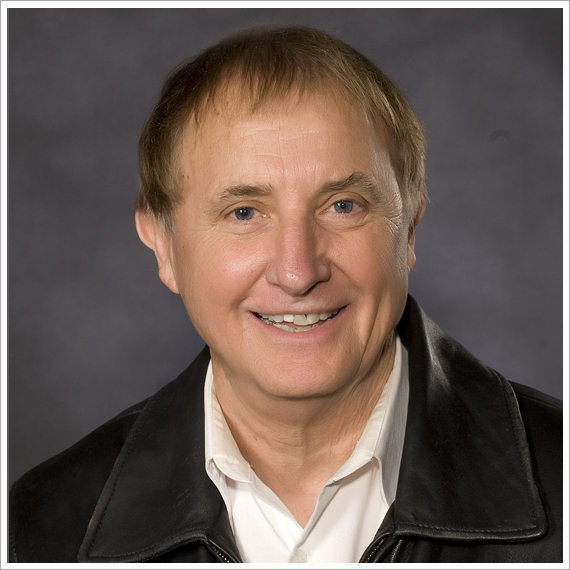
Phillip B. Hylemon
Professor
- : (804) 828-2331 Fax: (804) 828-0676

Liver
My laboratory has had a long term interesting in studying the mechanisms of activation of cell signaling pathways in hepatocytes and cholangiocytes by bile acids and the role of these molecules in the regulation of metabolism, apoptosis and cell growth. In the past, we reported evidence that conjugated bile acids activate the AKT and ERK1/2 signaling cascades via Gαi protein coupled receptor(s) in primary rodent hepatocytes and in vivo in rats. Recently, we published data that indicate that conjugated bile acids activate the ERK1/2 and AKT signaling pathways via the GPCR, sphinogsine-1- phosphatereceptor 2 (S1PR2) in hepatocytes. There is literature evidence that activation of the ERK1/2 signaling pathway activates nuclear sphingosine kinase 2 (SphK2) producing sphingosine-1-phosphate, a powerful inhibitor of histone deacetylase 1 and 2. Moreover, our recent unpublished data shows that S1PR2 regulates the level of SphK2 as S1PR2 null mice have significantly lower levels of SphK2. Moreover, over-expression of the gene encoding S1PR2 in mouse hepatocytes markedly up-regulated SphK2, but not SphK1, and genes involved in sterol and lipid metabolism. Our recent studies show that S1PR2 and SphK2 are markedly up-regulated in rat and human cholangiocarcinoma (CCA) cell lines and in
CCA tumor tissue. Inhibition of S1PR2 by a specific chemical antagonist or shRNA completely inhibited growth stimulation by conjugated bile acids (CBA) in CCA cells in culture. We also reported that FXR and the apical sodium bile acid transporter (ASBT) are significantly down-regulated in CCA and in cholangiocytes from bile duct ligated mice. We speculate that the loss of FXR, due to inflammation, may allow cells to proliferate when stimulated by exogenous hydrophilic conjugated bile acids that activate S1PR2. We are proposing a new hypothesis on how CBA induce cholangiocyte cell proliferation during cholestasis. We believe this new cell signaling pathway may have relevance not only to liver injury but also cancers of the GI tract.
Intestinal Microbiome/Microbiota and Bile Acid Metabolism:
Dr. Hylemon’s laboratory is investigating the role of intestinal bile acid 7 á-dehydroxylating bacteria in the genesis of cholesterol gallstone disease and possibly colon cancer. He is, therefore, postulating a bacterial etiology for a highly prevalent gastrointestinal disorders. His hypothesis for a role of intestinal bacterial in cholesterol gallstgone risk is based on the following data. Primary bile acids are synthesized from cholesterol in the liver. In humans, the two primary bile acids are cholic acid (CA) and chenodeoxycholic acid (CDCA). Bile acids are conjugated to either glycine or taurine prior to their active secretion from the liver, and are recycled between the liver and intestine several times each day. Several hundred milligrams of bile acids are lost into the colon each day. The colonic microflora canbiotransform bile acids into a number of different metabolites. Quantitatively, the most important reaction is the conversion of CA into deoxycholic acid (DCA) by a small population of bacteria belonging to the genus Clostridium. DCA can accumulate to over 60% of the bile acid pool in humans. The amount of DCA in the circulating bile acid pool appears to be controlled by the levels of intestinal 7 á-dehydroxylating bacteria, colonic transit time, and pH. In certain cholesterol gallstone patients with high levels of dexycholic acid in bile, antibiotic treatment markedly lowered the amount of DCA and the cholesterol saturation index (CSI), a major risk factor for cholesterol gallstone disease. The hypothesis is that high levels of intestinal 7á-dehydroxylating bacteria is an important risk factor of cholesterol gallstone disease in some cholesterol gallstone patients.. His laboratory has been studying the molecular biology of cholic acid 7 á-dehydroxylation in Clostridium scindensand other bile acid 7 á-dehydroxylating intestinal bacteria.. He and investigators in his laboratory discovered a new six step biochemical pathway for cholic acid 7 á-dehydroxylation and have cloned and sequenced a large bile acid inducible operon from this bacterium. They have determined the function of a number of gene products encoded by this operon and are currently trying to clone a second bile acid inducible operon. In addition, they are characterizing a number of novel enzymes in the cholic acid 7 á-dehydroxylation pathway. His laboratory has also reported that some bile acid 7 á-dehydroxylating intestinal bacteria can cleave the side chain of C-21 glucocorticord hormones generating C-19 androgenic hormones. Some bile acid 7 á-dehydroxylating intestinal bacteria can also generate allodeoxycholic and allolithocholic acid from primary bile acids. Allobile acids (5á) are more hydrophobic and have an A/B ring configuration like steroid hormones. The side chain cleavage reaction is catalyzed by a bacterial steroid desmolase. His laboratory is using the new technique of RNAseq to try and isolate genes encoding enzymes involved in side chain cleavage and allobile acids synthesis in these bacteria. He hopes to develop specific probes for detecting these genes and their expression in fecal samples from patients having varying amounts of DCA in bile. He is trying to determine if the levels of secondary bile acids and bile acid 7 á-dehydroxylating bacteria are correlated with different diseases of the gastrointestinal system.
Key Words: Bile acid cell signaling, cholesterol metabolism, gut microbiome and microbiota, intestinal metabolism of bile acids, fatty liver diseases i.e NAFLD, NASH, liver cancer, cholangiocarcinoma,cholestatic liver diseases, sphingosine-1-phosphate signaling, sphingosine kinases.

Professor